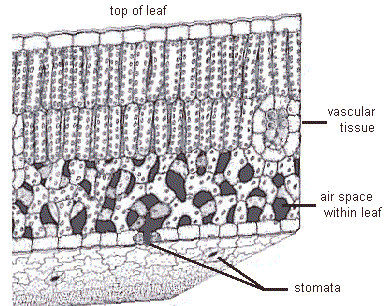

You've heard of respiration and perspiration, but how about transpiration? Transpiration is the loss of water, occurring mostly via the leaves—in a sense, plant perspiration.
For the machinery of a leaf to work, the air inside must be saturated. This is done by a system of tubes much like miniature soda straws. As molecules of water are moved through the tube walls, each molecule pulls up on the molecule below it, and it in turn on the molecule beneath it, and so forth all the way down into the roots of the plant. This is a continuing process to replace water lost from the leaf through pores in its walls.
Why is this important to us? Because plants that lose water faster than
their roots can find it may die—the reason desert plants have all sorts of ways to
decrease that loss. But some plants rooted at waterside don't need to conserve—and
don't! Such plants as Tamarisk move tremendous amounts of water from streams into
the air, leaving little for the unfortunate beings downstream.

Listen to the Audio (mp3 format) as recorded by KTEP, Public Radio for the Southwest.
Contributor: Arthur H. Harris, Laboratory for Environmental Biology, Centennial Museum, University of Texas at El Paso.
Desert Diary is a joint production of the Centennial Museum and KTEP National Public Radio, University of Texas at El Paso.

Diagram of a leaf that has been cut, showing the internal structure. The bottom surface of the leaf also is visible. Note the stomata (a couple are seen on the bottom surface and one is cut through vertically).
![]()